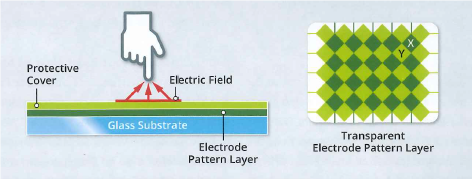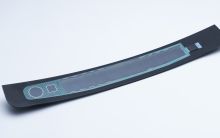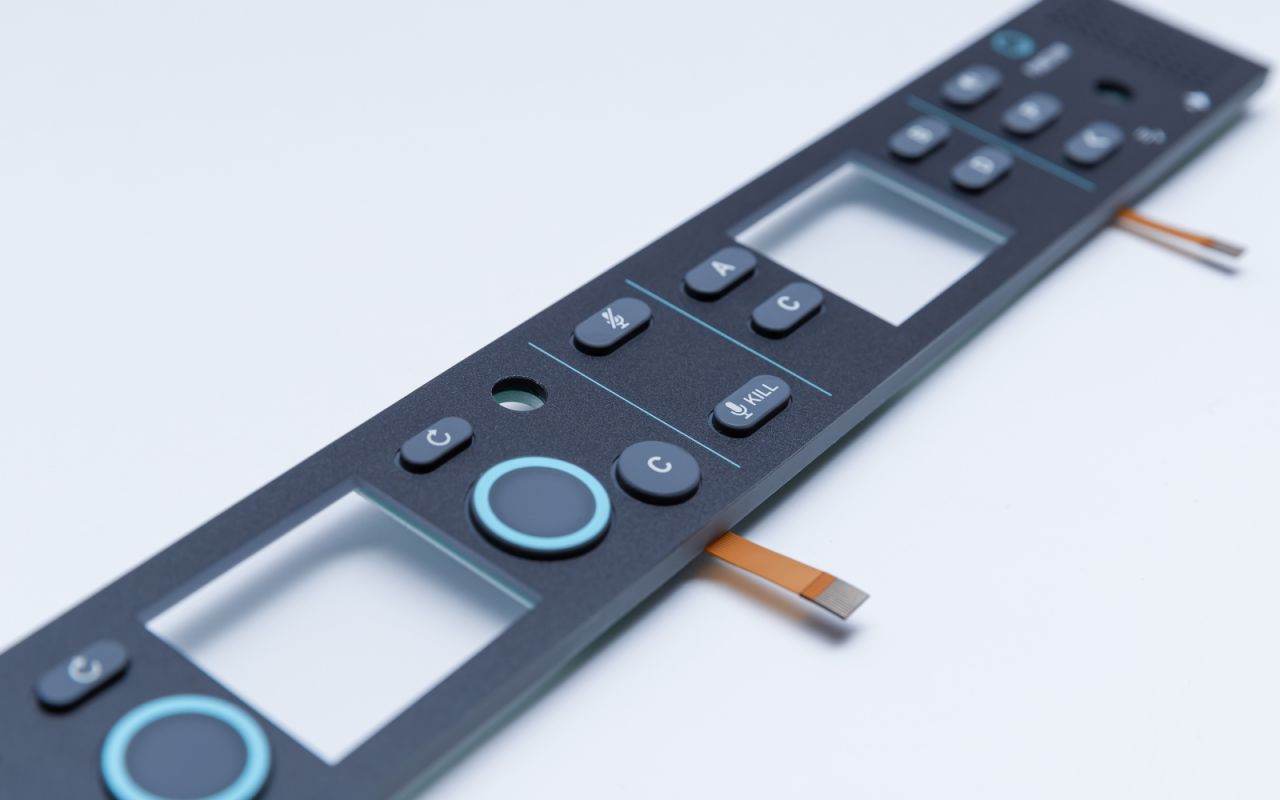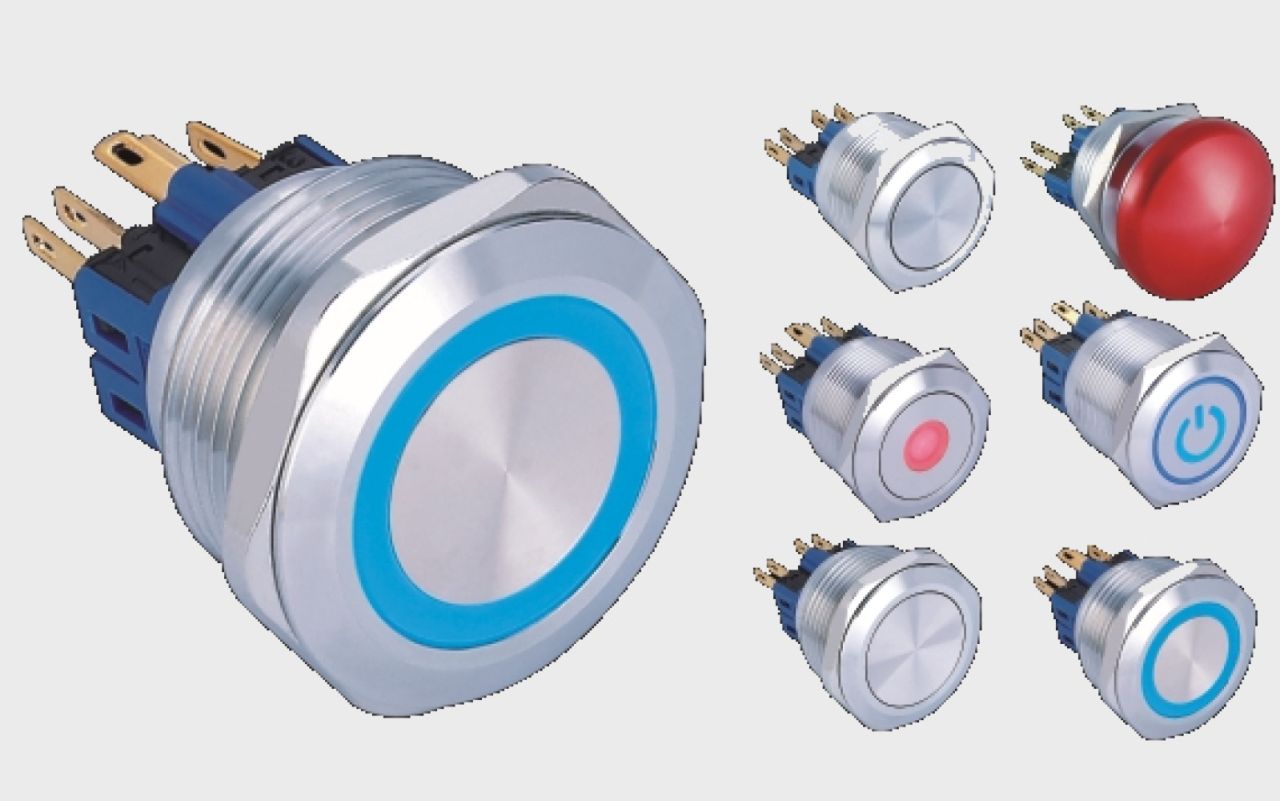Capacitive switches
Capacitive switches are suitable for all design-oriented applications and input units. By using glass, metal and plastic surfaces, a very robust and resistant HMI design can be created. These surfaces are resistant to moisture and disinfectants and are easy to clean.
Technology
Capacitive switches do not require any actuating force. They work by the approach of the finger. The electric field (active area) is either printed (printed sensor) or etched (ITO etched sensor). The finger causes a capacitance change, which is detected and evaluated by the sensor or the controller.


Capacitive switches are ideal in sensitive application environments where special properties such as optimum hygiene and durability play a role. In addition to the gastronomy and household appliance sectors, this technology is also an exciting alternative for medical technology. Capacitive switches offer a further advantage in terms of protection against chemical and/or mechanical damage and contamination. Their smooth, closed surface makes them easy to clean.
Advantages of capacitive switches
- very valuable customer designs can be implemented
- concave and convex user interfaces possible
- slider and wheel functions can be integrated
- production costs are within limits
- high chemical resistance
- easy cleaning
Areas of use
- household appliances
- industrial applications
- medical device manufacturing
Specifics
In contrast to membrane switches and short-travel keys, there is no tactile feedback. However, this can easily be compensated by an acoustic and optical signal.
Even though the tactile/mechanical keyboard is still the most frequently used input device today, interesting alternatives have arisen with capacitive switches.





